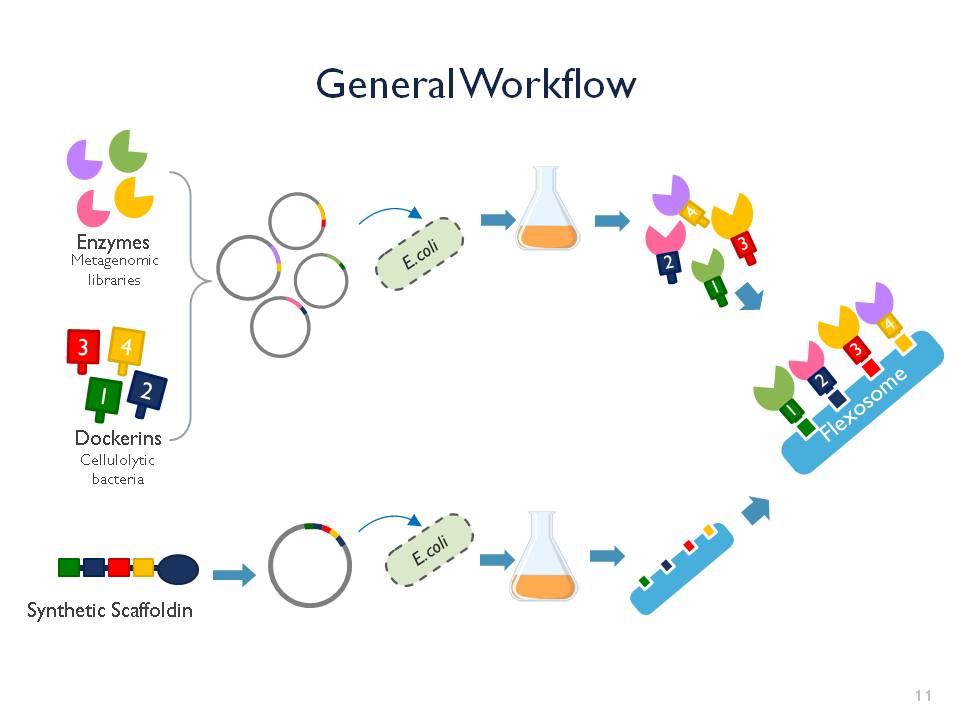Difference between revisions of "Team:Goettingen/Description"
| Line 32: | Line 32: | ||
<h2> References </h2> | <h2> References </h2> | ||
| + | </div></div> <!--These are the closing tags for div id="mainContainer" and div id="contentContainer". The corresponding opening tags appear in the template that is {{included}} at the top of this page.--> | ||
</html> | </html> | ||
Revision as of 11:15, 18 September 2015

About our Project
Our project
The iGEM team Goettingen 2015 is currently developing the “Flexosome”. It is our enzymatic penknife: a customizable complex for more efficient and synergistic multi-enzymatic processes. It consists of a scaffoldin, dockerins and exchangeable enzymes. The enzymes of interest can be attached to the scaffoldin via the dockerin stations and once attached complete the reactions.The first step
Right now the team is working on a proof of concept. Our first Flexosome will contain phosphatase, esterase and cellulase found in metagenomic libraries along with RFP, a fluorescent reporter gene. Once our E. coli is able to express and produce this functional Flexosome, this will open the door for more complex and specific applications.The inspiration
We studied the natural cellulosome structure, in which different cellulotytic enzymes are assembled into a bigger scaffoldin via dockerin stations, leading to optimized cellulose degradation. The interaction between scaffoldin and dockerins has been proven to be strong and stable, this gave us the ideal platform to design our "Flexosome” device. Traditionally cellulosome engineering is thought for optimization of cellulose degradation, but we don’t have to stop there! A much broader range of enzymes are actively being discovered every year. That is why we intend to combine the scaffoldin protein from cellulolytic bacterium with varying and exchangeable enzymes. The result: a very versatile, stable and innovative tool!The goal
We want to achieve a protein construct which will be able to ensure a high local concentration of enzymes and catalyse multiple enzymatic processes at one site, making the product of one process the substrate of the next on the scaffoldin. Ultimately, the construct will not only increase efficiency of the reactions but also be fully customisable for any kind of enzymatic process.
